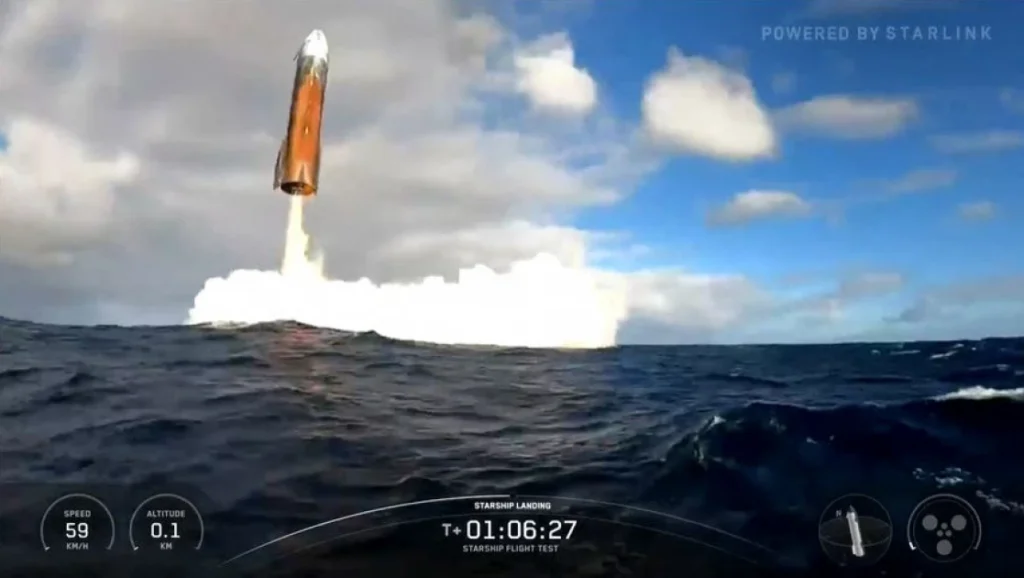SpaceX’s Starship megarocket soared into the skies on Tuesday evening, delivering a much-needed success after a string of explosive setbacks had raised questions about its future. Standing at an awe-inspiring 403 feet (123 meters), Starship is the most powerful rocket ever built and central to Elon Musk’s ambitions of colonizing Mars as well as NASA’s Artemis program to return astronauts to the Moon.
The launch, from SpaceX’s Starbase in southern Texas at 6:30 pm local time (2330 GMT), was met with cheers from engineers watching via a live webcast. The Super Heavy booster, Starship’s first stage, performed as planned and splashed down in the Gulf of Mexico, producing a sonic boom. Unlike past attempts, SpaceX skipped using its giant tower “chopstick” arms to catch the booster, instead testing its resilience to potential engine failures.
The upper stage also called Starship then entered orbit to prove its capabilities. In a key milestone, it successfully deployed eight dummy Starlink satellites, marking the first time SpaceX demonstrated Starship’s potential for payload delivery. Cameras aboard the craft streamed live images as a robotic arm pushed each satellite into space.
The mission wasn’t flawless. Several heat shield tiles detached during reentry, and part of a control flap burned away as the vehicle plunged back through Earth’s atmosphere, engulfed in plasma. Yet SpaceX downplayed the issues, noting the test intentionally pushed the rocket to its limits. “We’re kind of being mean to this Starship,” said communications manager Dan Huot. “We’re really trying to poke at its weak points.”
Despite its triumph, Starship still faces daunting engineering hurdles. Developing a fully reusable heat shield remains one of the toughest challenges, and in-orbit refueling with super-cooled propellant vital for deep-space missions has yet to be attempted. NASA is counting on a customized Starship to serve as its lunar lander by 2027, while Musk has pledged to send an uncrewed mission to Mars as soon as next year.
For now, however, the successful tenth flight has quieted critics and reaffirmed SpaceX’s “fail fast, learn fast” philosophy. As Musk declared on X following the mission: “Great work by the SpaceX team!!”

